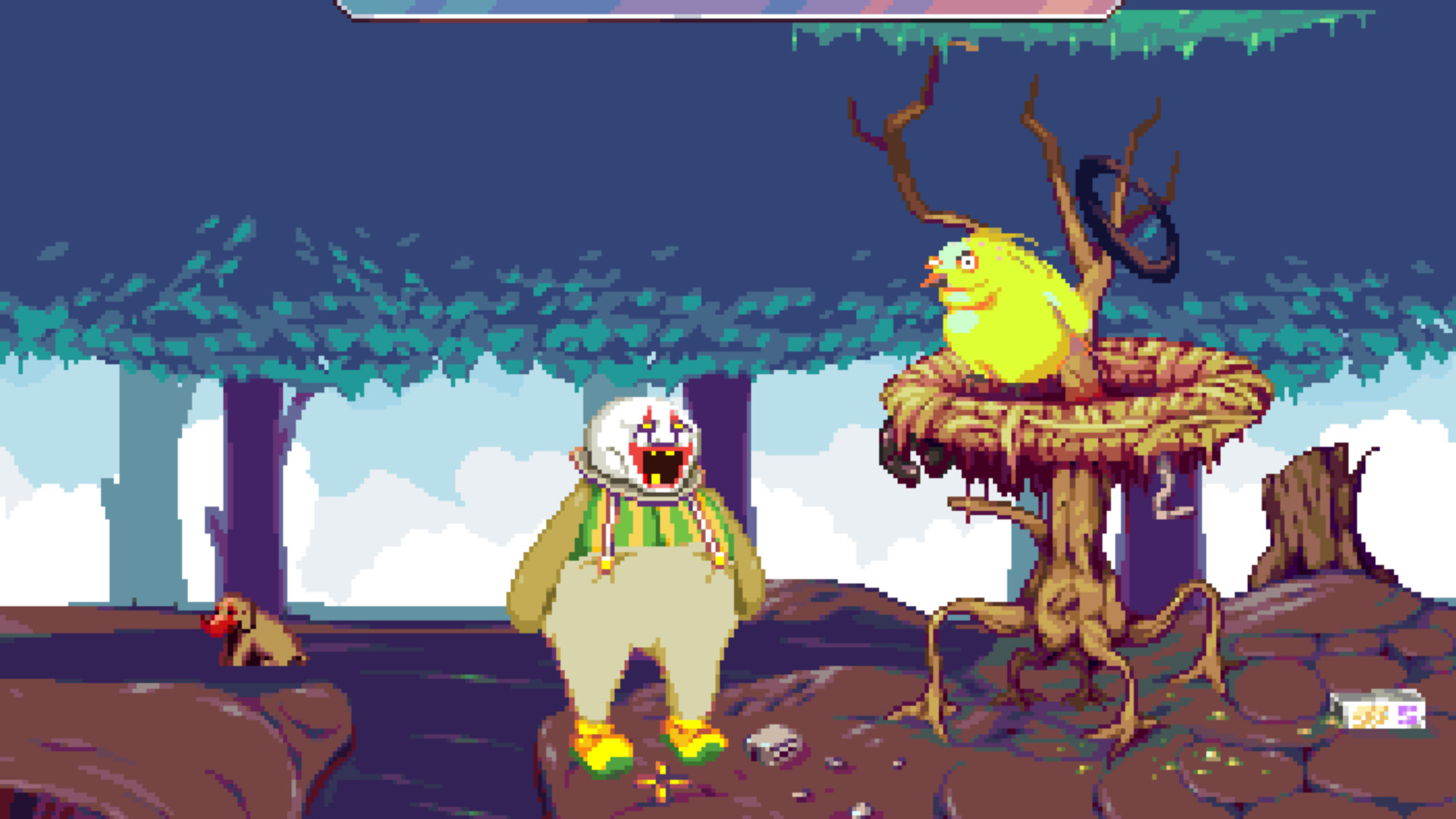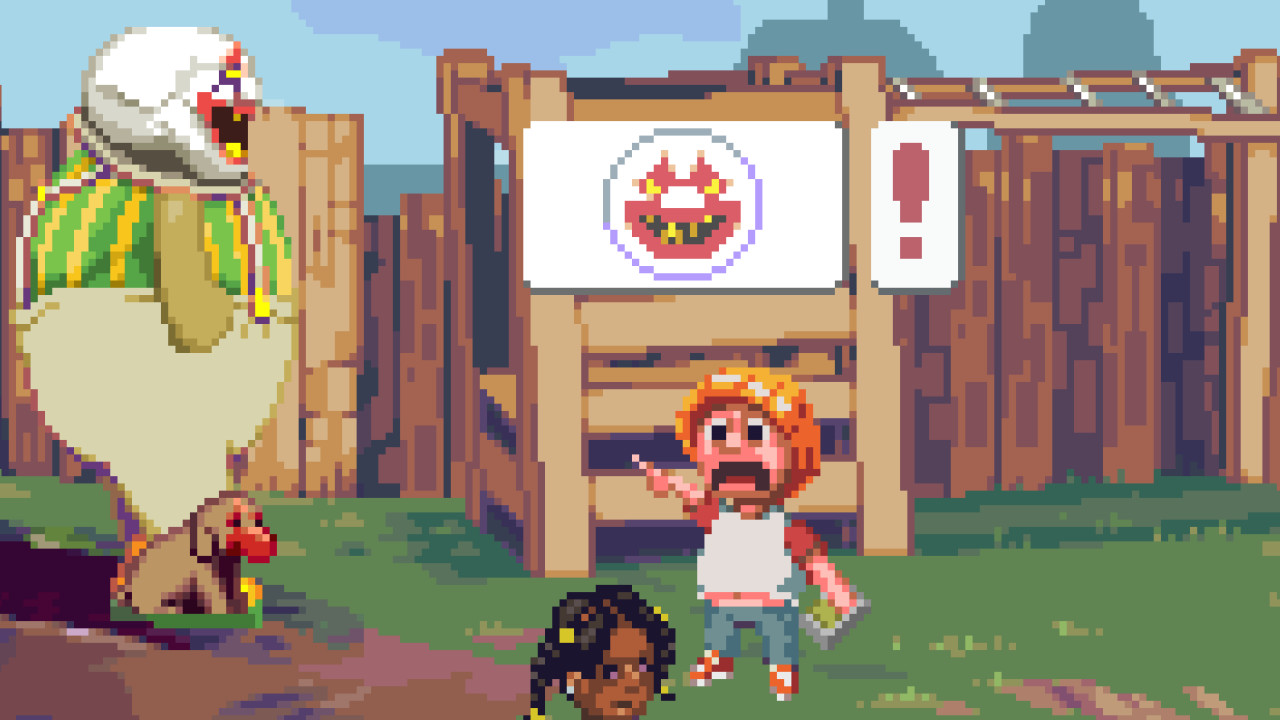Dropsy: nonverbal storytelling
I promise this micro-critique will actually be brief unlike most of the others.
Dropsy (which you can get for Windows, Mac, or Linux) is a bizarre pixelated adventure game without any words in it. Instead, characters communicate through symbols, such as faces or recognizable objects. I do recommend playing it if you like adventure games or quirky, semi-disturbing stories.

What’s new and great about Dropsy is the level of expressiveness it achieves from its world and characters with so little fidelity to work with. It feels novel and engaging to interpret what someone is telling you from a few tiny images alone. Sometimes it’s obvious:

Other times less so.

The short, sweet takeaway of this week’s essay is: go play Dropsy, or some other game that experiments with different ways to deliver dialogue and story to the player aside from simple language. Here are some others off the top of my head:
- Suveh Nux makes you learn a magic language by example to escape a dungeon
- The Witness makes you learn to solve its intricate puzzles completely organically in a way that’s part-visual and part-very-hard-to-describe.
- The Arrival is a short, beautiful picture book about refugees and immigration. It’s completely nonverbal, just like Dropsy. Check your local library, if you have one.
Questions to ask yourself (and some hints from me):
- How does this feel compared to a conventional tutorial or dialogue system? Am I pushing my brain in ways I’ve never done before, and would I have noticed if I weren’t thinking about it?
- In what ways does the system fail to grab me and explain itself naturally? (In Dropsy, if you don’t recognize the object or symbol in a voice bubble, you’re pretty much screwed. The trade-off of low-rez graphics is that sometimes simple things like a lever or a button aren’t as obvious to everyone who plays. Can you convey the same information in multiple ways to let the player figure it out some other way?)
- The player usually won’t try to do the right thing again if it fails the first time. For example from Dropsy, if the player sees that a woman needs a new tire for her wheelchair, and finds tires somewhere but inexplicably can’t reach them, they might forget it completely and get stuck later on when the tires actually become available without any visual cue to let them know this. Or, in classic text adventures, the player has the right solution but can’t figure out how to type it properly for the game to understand, they might assume they were wrong and keep looking for other solutions. (Looking at you, Lost Pig. But I can’t stay mad at you. You’re the best.)
- Even Dropsy’s menu is completely symbol-based. It can be more or less understood by anyone regardless of language or country of origin. Can I exploit this to sell games internationally while saving time and money in the localization process? (The answer is yes.)
- Does The Arrival feel more universal as a story without using any language? How does it manage to convey the difficulty of communicating with others in a foreign land, while avoiding words of any kind? Can puzzling through symbols and gestures feel almost game-like?
So this week’s more of a “food for thought” post than a real essay. Hope you get something out of it nonetheless. See you next week!
This post was written with support from Patreon. Please consider following or pledging to my campaign to help me keep doing this. Have a response? Write me an email.